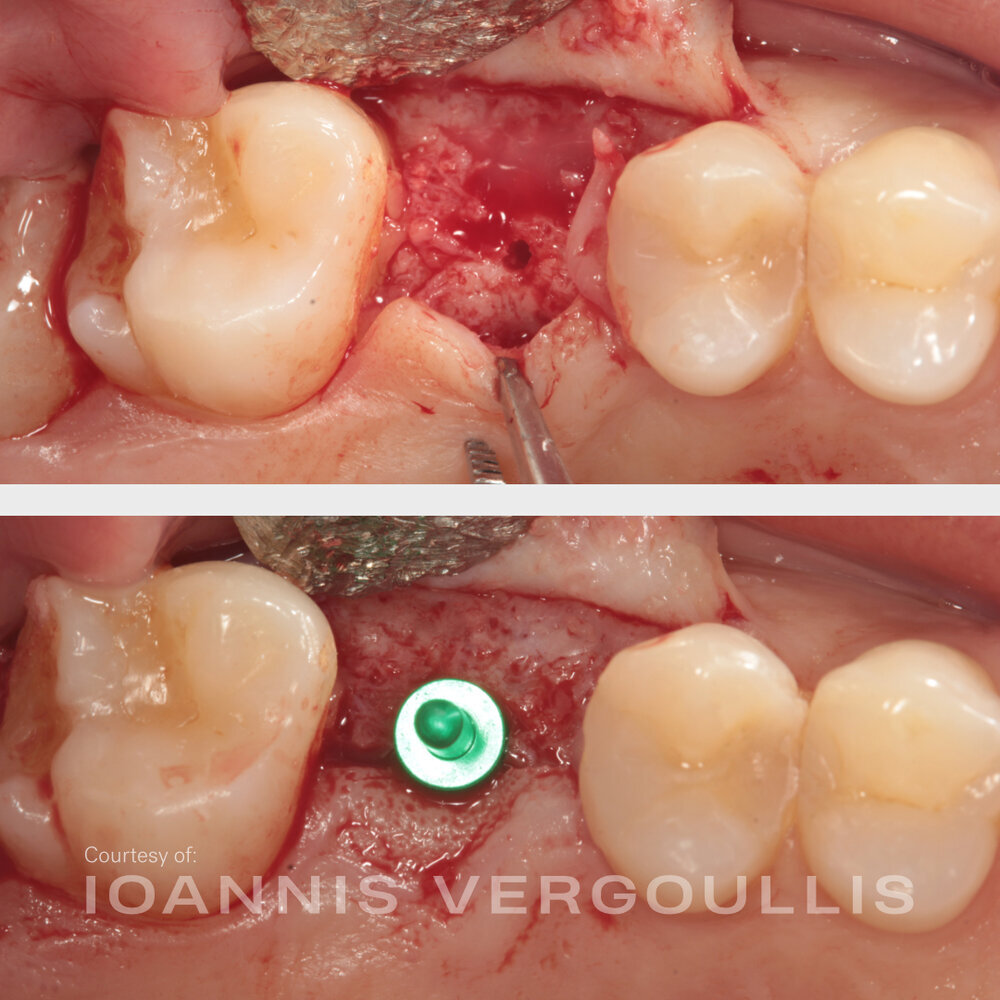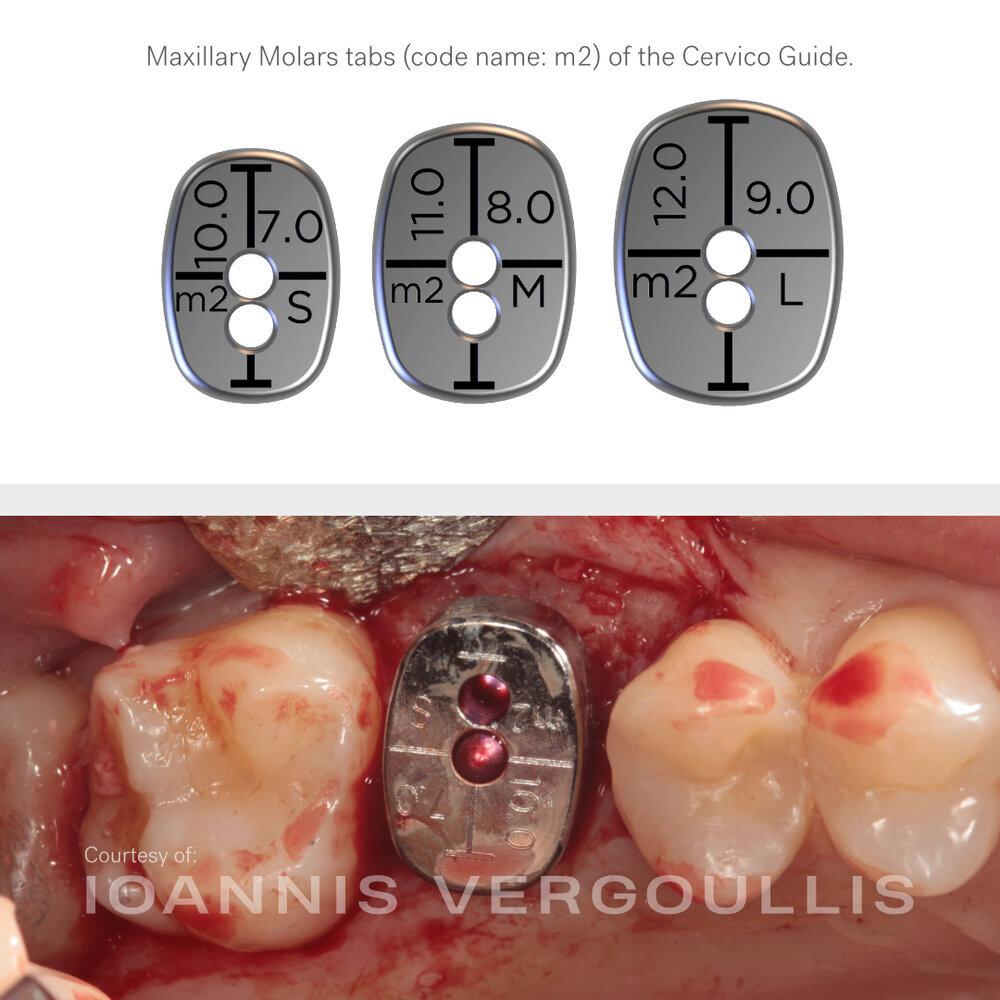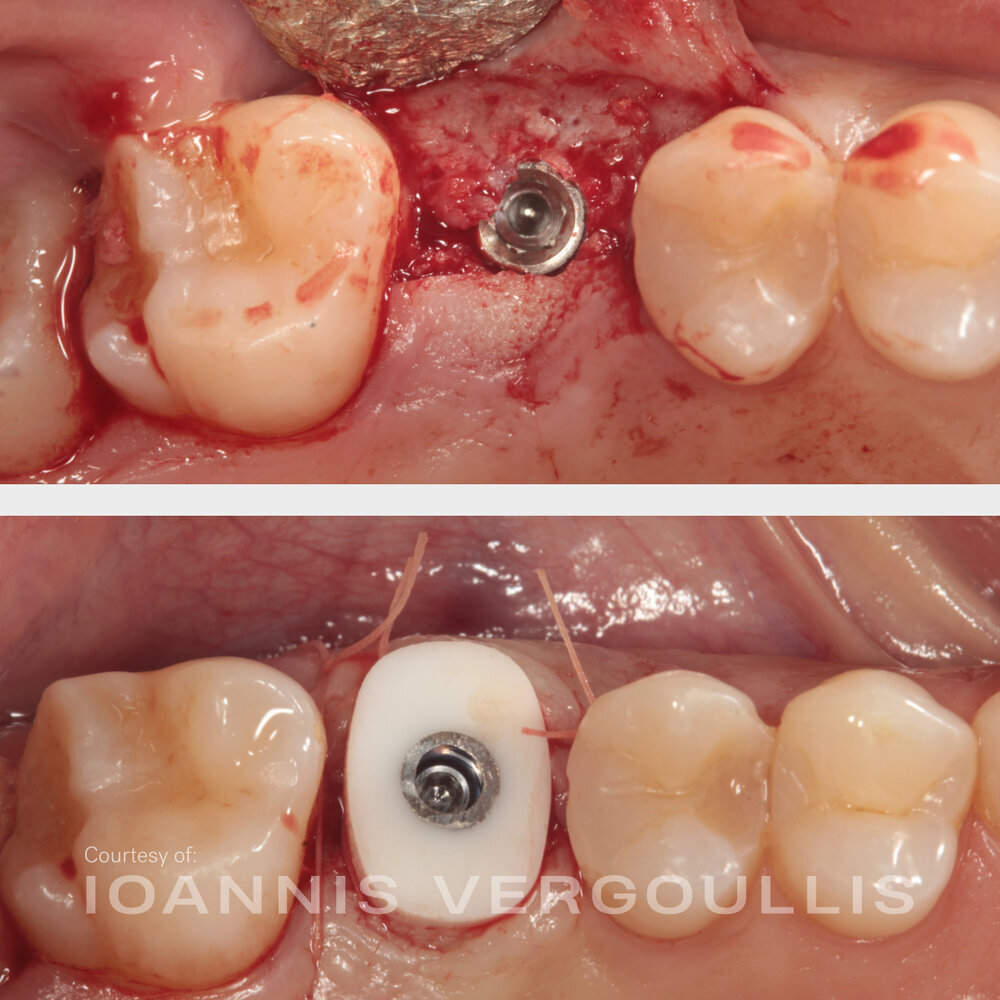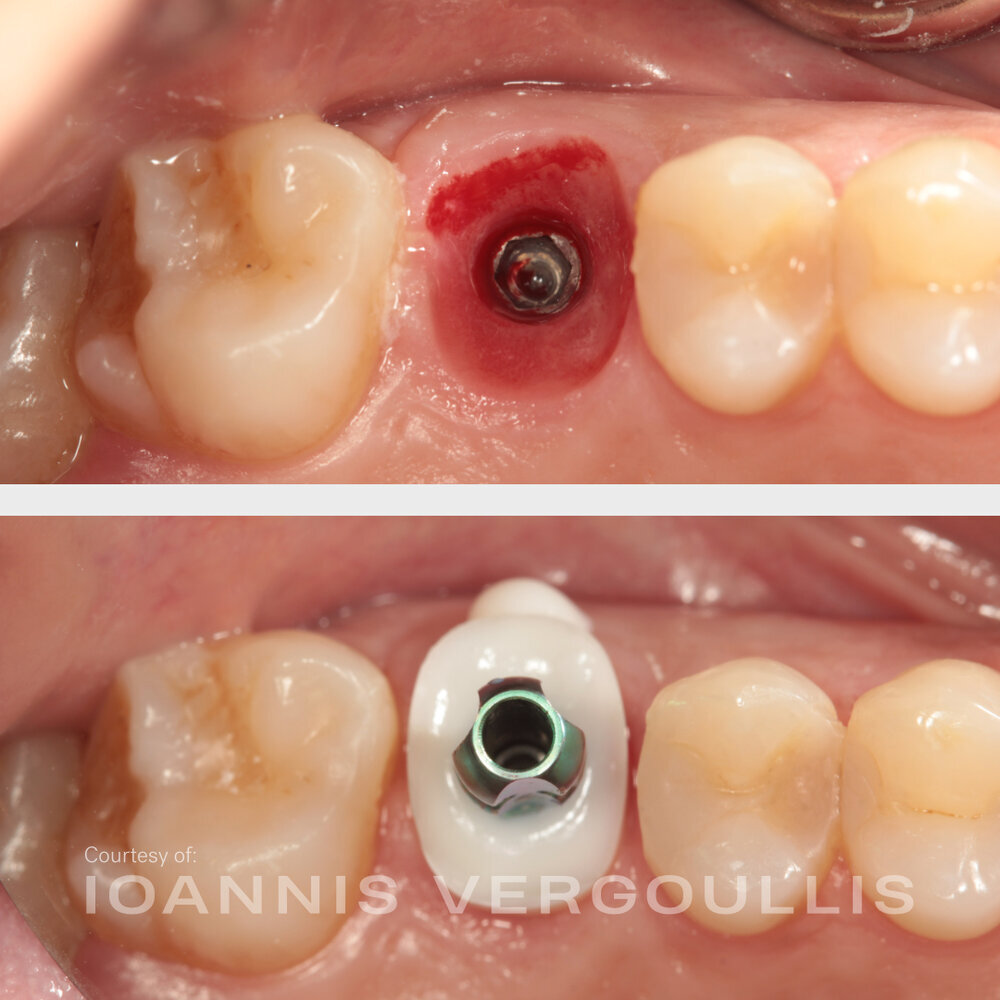A simple Cervico case.
Beautiful, bread and butter dentistry.
Evaluation stage
The edentulous site is evaluated with the cylindrical tab of the Cervico Guide in order to confirm adequate mesio-distal dimensions for implant placement.
Pro tip: The number engraved on the cylindrical tab, represents its actual diameter in mm (e.g.: #9 - 9 mm). This information enables you to select an implant platform size that
can be safely placed in the given edentulous site, allowing 1.5mm distance between the implant platform and the adjacent teeth (Safety zone concept).
Surgery
The cylindrical tab that fits the edentulous space being in light contact with the adjacent teeth (#9), is now utilized in order to assist with the initiation of the implant osteotomy at the center of the prosthetic space.
Make sure to align the central, engraved, line of the cylindrical tab to the occlusal lines of the adjacent teeth.
Pro tip: Perform this step in a flap-less manner by utilizing a drill with diameter of 2mm or narrower
Reflect a flap or continue in a flap-less manner; install into the osteotomy the surgical pin of the Cervico guide and evaluate proper inclination.
Install the anatomical tab of the Cervico Guide on the pin in order to evaluate the final size and shape of the Cervico healing abutment that will be needed in relation to the size and shape of the edentulous site, the osteotomy position and inclination.
Pro tip: At this stage you can utilize any of the three sizes of the anatomical tabs dedicated to the type of tooth to be replaced in order to choose the ideal size for the case (For this maxillary molar case, an m2 small size (m2s) anatomical tab has been chosen as the most appropriate one). The ideal size anatomical tab is the one that is confined within the borders of the cervical margins of the future prosthesis as those can be dictated intra-orally by the adjacent dentition or by a diagnostic wax-up.
After completion of the osteotomy install the implant making sure that the flat side of the prosthetic connection is oriented bucally. Then, proceed with installation of the
m2S healing abutment to the implant.
Pro tip: At time of implant placement you can achieve the ideal orientation of the prosthetic connection of the implant by orienting one of the markers available on the implant transfer tool of your implant surgical kit towards the mid bucall side.
Torque the Cervico healing abutment to the implant and suture the flaps.
Pro tip: This step is recommended for cases utilizing one stage healing protocol; this allows a stable connection with no micro-movement between the healing abutment
and the implant but it also allows the patient to apply oral hygiene measures during the healing process without any risk of disengagement of the healing abutment.
Seal the screw access bore with sterile Teflon tape and composite resin material.
Pro tip: the Teflon tape can be soaked in an antibacterial agent like for example blueM gel.
4 months post surgery
Four months later upon removal of the Cervico healing abutment the soft tissue shape, quality and quantity appears ideal for the restorative phase to be initiated.
Pro tip: Healing time is depended on implant surface, bone quality and patient’s healing capacity.
Impression stage
Replace the Cervico healing abutment with the duplicate Cervico impression post.
Pro tip: (optional) add a small quantity of composite material on the body of the impression post extending over the free gingival margin in order to perform the 1FPT impression technique (pg.14)
Fabricate the working cast; the customization of the impression post allows a stable fit of the later into the impression.
Pro tip: In case you utilize the 1FPT impression technique, the proper fit of the composite bulk allows you to ensure proper three-dimensional installation of the impression post into the impression.









